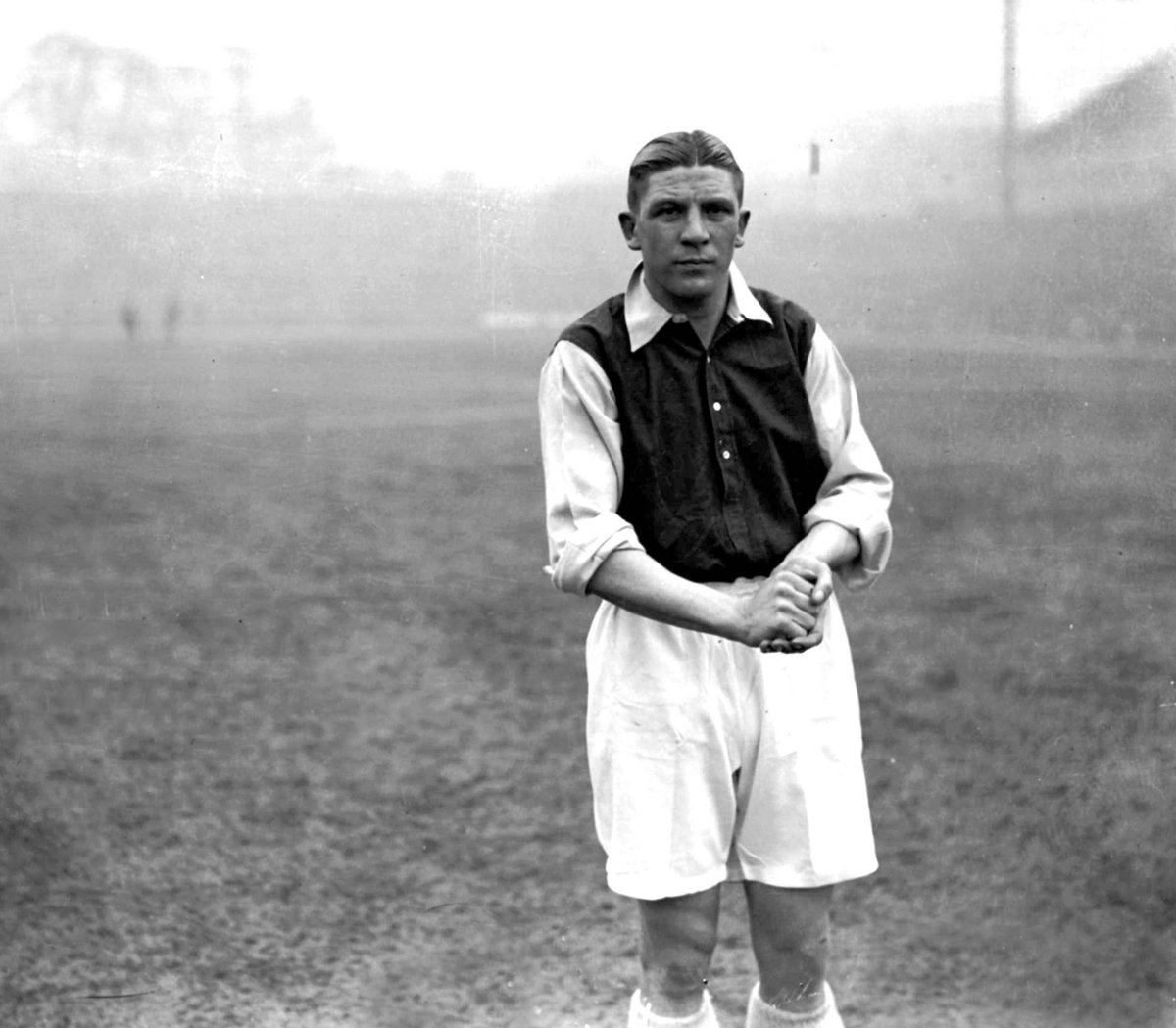Edward (Ted) Joseph Drake
Date of birth: 16 August 1912
Date of death: 30 May 1995 (aged 82)
Place of birth: Southampton, England
Nationality: English 🏴
Height: 5 ft 10 in (1.78 m)
Position(s): Centre forward
Arsenal Senior Career: 1934-1945
Senior Apps/Goals: 184/139
General Information
Ted Drake (born August 16, 1912 – died May 30, 1995) was an English centre-forward and later a manager, celebrated for his prolific goal-scoring exploits with Arsenal in the 1930s and his historic achievements as Chelsea manager in the 1950s. Known for his strength, clinical finishing, and fearless style of play, Drake remains one of the most iconic figures in English football history.
Early Life
Ted Drake was born in Southampton and grew up in modest surroundings. Like many young boys of his generation, football was a natural passion, and his early talent quickly became apparent. He played locally before joining Southampton in 1931, where his instinct for goals immediately marked him out as one of the most promising forwards in the country. Within two years, he had built a reputation as a natural centre-forward with a keen eye for goal, attracting attention from bigger clubs.
Arsenal Career (1934–1945)
Drake joined Arsenal in March 1934, brought to the club by legendary manager George Allison as a successor to Cliff Bastin and other greats of the Highbury era. He wasted no time making an impact, scoring on his debut against Wolves.
The 1934–35 season proved extraordinary. Drake scored 42 goals in 41 league matches, a club record that remains one of the most astonishing feats in English football. Among those goals came his famous seven-goal haul against Aston Villa at Villa Park in December 1935, a record for the most goals scored by a single player in a top-flight English game—still unbeaten today.
Drake was central to Arsenal’s dominance in the 1930s. He helped secure the First Division title in 1934–35, lifted the FA Cup in 1935–36 with a decisive goal in the final against Sheffield United, and added another league championship in 1937–38. His career was interrupted by World War II, but he continued to represent Arsenal in wartime matches, showing loyalty to the club until 1945.
International Career
On the international stage, Drake earned five caps for England between 1934 and 1937, scoring six goals. His highlight came during the famous “Battle of Highbury” in 1934, where England defeated Italy, the reigning World Cup champions. Drake scored in that fiercely contested game, further enhancing his reputation as one of the best forwards in the world.
Managerial Career
After hanging up his boots, Drake moved into management. His biggest impact came at Chelsea, where he took over in 1952. He revolutionised the club by modernising training methods, overhauling scouting, and promoting a more professional culture. In 1954–55, he guided Chelsea to their first-ever First Division title, making history as the first man to win the English top-flight both as a player and as a manager.
Beyond Chelsea, Drake worked in coaching and scouting roles, including positions at Fulham and even a brief stint assisting at Barcelona, demonstrating his deep football knowledge and adaptability.
Playing Style
Ted Drake was the archetypal English centre-forward. Strong, fast, and courageous, he thrived on physical battles with defenders. He was clinical with both feet, deadly in the air, and possessed a thunderous shot. Defenders found him almost impossible to contain, and his bravery often saw him play through knocks and injuries, embodying the toughness of pre-war football.
Legacy
Drake’s legacy is twofold: at Arsenal, he remains one of the greatest goal scorers in the club’s history, his records still standing as benchmarks for future generations. At Chelsea, his managerial achievements reshaped the club and laid the foundations for future success. More broadly, he is remembered as a football man who excelled both on and off the pitch.
Ted Drake stands as one of the rare figures to have made lasting impacts at two of English football’s great clubs, ensuring his name is forever woven into the game’s history.
| Season | Appearances | Goals |
| 1933-34 | 10 | 7 |
| 1934-35 | 46 | 44 |
| 1935-36 | 29 | 27 |
| 1936-37 | 29 | 27 |
| 1937-38 | 30 | 18 |
| 1938-39 | 40 | 16 |


